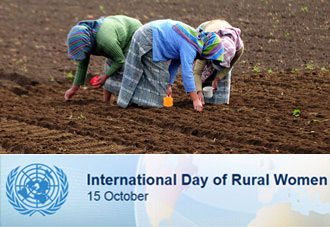Thanks to Environmental Youth Ambassador Med Moumin
for this guest blog post about the eleventh Sustainable Development Goal! This post is part of our "Road to Marrakech" social media campaign leading up to COP22. The next Sustainable Development Goal we are highlighting is SDG 11: Sustainable Cities and Communities.
2015 was the year that UN General Assembly has taken a new twist in adopting the 2030 Sustainable Development Goals (SDG). Included in the new Agenda is a typical human right, target 11a, which calls on all countries to support a positive economic, social and environmental links between urban, peri-urban and rural areas by strengthening national and regional development planning.
Sustainable urban and rural development should be in an ecologically, economically and socially sustainable manner that contributes in the reduction of social disparities and preserves the right to access to healthy living, clean water, and adequate education. Historically, there have been great gaps in quality of life between those living in urban and rural communities and between rich and poor neighborhoods within cities.
| This panoramic view from Brazil illustrates the gap between rich and poor urban communities. |
| Dar Si Hmad improves access to potable water in Southwest Morocco |
Dar Si Hmad endorses various educational opportunities, and quality in education is always among the priorities. Children of the remote villages of Aït Baamrane lack access to up-to-date subjects in schools, with science, technology, engineering, and mathematics resources particularly poor. Dar Si Hmad has developed a STEM curriculum engaging students ages 7-14 in activities that enhance their awareness of the local environment they live in.
| A student from the Moroccan countryside examines native ecology during Dar Si Hmad's Water School |
Dar Si Hmad believes in sustainability everywhere, and people living in rural settlements need to feel that they have the same opportunities no matter where they are born or move to.
In urban Agadir, Dar Si Hmad has a hand in promoting a sustainable livelihoods amongst the youth and children of future generations. The new Environmental Youth Ambassadors have spread the influential experience they had with children of Water School in rural Aït Baamrane to the city kids of the SOS Children's Village in Agadir. Ambassadors worked with urban students to explore the everyday practices they need to develop a sustainable healthy environment around them.
The Environmental Youth Ambassadors’ have also sought to be leading models for promoting sustainability in the city of Agadir. EYAs have created a sharing platform using visual storytelling to generate dialogue on environmental challenges and solutions. They have led clean-up activities around the region, visibly encouraging communities to take care of the environment by reducing pollution. And several of the Ambassadors are going to take part of the Conference of Youth (COY12) in Marrakesh ahead of COP22. The conference is a universal opportunity to exchange experiences and inspire each other.
| EYAs taking part in a Clean & Green Campaign in Paradise Valley |
Target 11.4 of the SDGs calls
to make cities and human settlements inclusive, safe, resilient and
sustainable through the preservation of the world’s cultural and natural
heritage. I will thus also spotlight Dar Si Hmad’s Ethnographic Field School, a good example of cultural enhancement that promotes a global socio-cultural exchange and dialogue between Moroccans and foreigners. Dar Si Hmad provides universal opportunities for students and researchers from all over the world to be part of what makes the Moroccan cultural heritage. Visitors are facilitated by academic and cultural programs, service learning, homestays, and language classes.
| University of Tampa (May 2015) examine the archetypal design of a traditional Amazigh (Berber) door in Southwest Morocco while visiting the Amazigh Heritage Museum in downtown Agadir as part of our Ethnographic Field School |
Join Dar Si Hmad at COP22 - see here to learn how you can see us in Marrakech. If you can't be with us physically in Morocco, follow us on Twitter, Instagram, and Facebook
to learn more about how we are working to help cities and communities thrive, achieve
progress toward the Sustainable Development Goals, and support the
important work of COP22.



